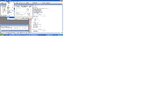vinay bs
Member level 3

- Joined
- May 22, 2012
- Messages
- 65
- Helped
- 0
- Reputation
- 0
- Reaction score
- 0
- Trophy points
- 1,286
- Activity points
- 1,751
u have to define like this...
#ifndef _XTAL_FREQ
#define _XTAL_FREQ 20000000
#endif
#ifndef _XTAL_FREQ
#define _XTAL_FREQ 20000000
#endif


